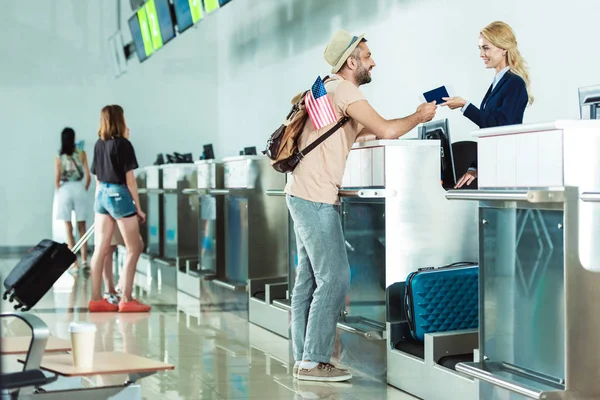Booking connecting flights can often feel like navigating a maze. With the pressure of tight schedules, unpredictable delays, and the sheer complexity of airports, it’s easy to make mistakes that can turn your travel plans into a headache. To help you avoid pitfalls that could lead to missed connections or additional expenses, we’ve outlined some of the most common mistakes travelers make when booking connecting flights. This guide offers practical tips and insights to ensure your journey is smooth and stress-free.
Underestimating Connection Times
One of the biggest mistakes travelers make is underestimating the time needed to connect flights. Each airport has its own set of rules regarding Minimum Connection Times (MCT), which is the shortest time required between the arrival of one flight and the departure of the next. While MCT might seem generous, it often doesn’t account for delays, security checks, or terminal changes.
Consider this: if your first flight arrives at a large airport like London Heathrow, and you only have a 45-minute layover before your next flight, you could be setting yourself up for failure. Airports can be massive, and even if your flight lands on time, navigating from one terminal to another can consume valuable minutes. To avoid stress, aim to give yourself a buffer.
For domestic flights, a minimum of 90 minutes is recommended, while international connections might require 2 to 3 hours. Building in extra time not only reduces the likelihood of missing a flight but also allows for a more relaxed transition between flights. In essence, when planning your itinerary, always opt for longer connection times to safeguard your travel plans.
Ignoring the Airport Layout
Many travelers neglect to familiarize themselves with the layout of the airports they’ll be passing through. Understanding where your gates are located can make a world of difference. Some airports, such as Singapore Changi or Tokyo Haneda, are designed for smooth transfers, while others, like Paris Charles de Gaulle, can be confusing and frustrating to navigate.
Before you travel, take a moment to look up the airport's layout online. Most major airports offer maps and even mobile apps that provide real-time updates on gate changes and estimated walking times. Knowing where to go as soon as you land allows you to plan your route effectively and avoid unnecessary stress.
Also, consider that not all terminals are equally equipped. Some may have limited facilities, while others offer restaurants and lounges. If you have a longer layover, knowing where to find amenities can make your wait much more comfortable. So, do your homework; a little preparation can go a long way toward ensuring a smooth transfer.
Booking Separate Tickets
While it might seem tempting to book separate tickets for cheaper flights, this decision often leads to complications that can ruin your trip. When you purchase flights from different airlines on separate tickets, you lose the benefits of interline agreements, which are in place to help passengers in case of missed connections.
For instance, let’s say you book a flight from New York to London with one airline and a connecting flight from London to Barcelona with another. If your New York flight is delayed, resulting in a missed connection in London, the second airline has no obligation to accommodate you. This means you may need to buy a new ticket at a significantly higher price to reach your final destination.
To avoid this scenario, it’s best to book all legs of your journey through a single airline or alliance. Not only does this offer better protection against missed connections, but it often results in a smoother travel experience overall. If you must book separate tickets, allow for ample layover time—consider at least four hours—to provide yourself with a safety net against delays.
Not Considering Baggage Policies
Another common mistake is overlooking the baggage policies of different airlines, especially when booking connecting flights. Each airline has its own rules regarding checked baggage, and failing to understand these can lead to unexpected fees and complications.
For instance, if you’re flying with two different airlines, you may need to collect your luggage and recheck it before your next flight. This is especially important when traveling internationally, as customs and security checks can add significant time to your layover.
Additionally, some budget airlines charge for checked bags, while others may allow free carry-on. Always read the fine print about baggage allowances before you book. Consider using packing strategies that minimize the need for checked luggage, such as travel-sized toiletries or versatile clothing that can be mixed and matched.
Understanding baggage policies can save you time and money. If you're flying on a budget airline, look for options that allow you to pre-purchase checked baggage online, as this is often cheaper than paying at the airport.
Overlooking Travel Insurance
When booking connecting flights, many travelers neglect to consider travel insurance. This is a crucial oversight, as travel disruptions can happen for various reasons—weather, mechanical issues, or unexpected events. Without insurance, you could face significant out-of-pocket expenses for rebooking flights or accommodations.
Travel insurance can cover not only missed connections but also provide support for other travel-related issues. For instance, if a delay forces you to spend an extra night at your connecting city, insurance may help cover the cost of your hotel.
Before purchasing insurance, carefully read the policy to ensure it includes coverage for missed connections. While you may hope to avoid any travel mishaps, having insurance provides peace of mind and a safety net for unforeseen circumstances. If you find yourself in a tight spot, services like EasyJet complaints https://easyjetcompensation.com/easyjet-complaints/ can help you navigate the process and potentially secure compensation.
Conclusion
Navigating connecting flights doesn’t have to be a stressful experience. By avoiding common mistakes—like underestimating connection times, ignoring airport layouts, and neglecting travel insurance—you can significantly enhance your travel experience. With careful planning and awareness, you can ensure a smooth journey from start to finish.




